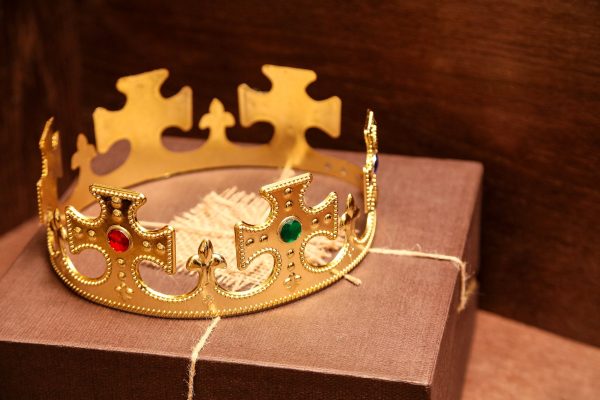By Charles A. Coulombe
My past remarks on the possibility of Charles I’s sanctity awoke something of a hornet’s nest. Not surprisingly, Ordinariate folk in particular were harshly divided, and a number of English-speaking cradle Catholics were simply outraged. It is interesting to note that Francophone Catholics (notably Bishop Bossuet, Louis XVI, and Fr. Jean Charles-Roux) often take a decidedly more positive view of the question—the latter named going so far as to serve as a patron of the Society of King Charles the Martyr and to write a pamphlet asserting the murdered king’s sanctity in no uncertain times. Indeed, I remember a time not long ago when all but one of the SKCM’s patrons were “Roman” Catholics.
Today, one of the highest-ranking Catholics in the Kingdom, Lord Nicholas Windsor, remains a patron of the Society. He has written, “In the King’s personal piety, devotion and support of the Church, his ecumenical understanding (far advanced for his day), his patronage of the Arts in the service of God, his inspiration of the Christian classic, Eikon Basilike and of course his martyrdom, we have much to REMEMBER and be thankful for.”
Now, other than objections that were actually addressed in the article, the two major ones that surfaced were a) that Charles never ceased to be head of the Church of England; and b) that he was crowned by the Archbishop of Canterbury and took the coronation oath. But a great deal of light may be shed upon these topics—and what Rome was willing to tolerate in those days, by looking at the career of his son, the indisputably Catholic James II.
The Servant of God, James II (so we must call him, since his cause was opened by the Archbishop of Paris in 1734; it may be dormant but has never been closed—and boasted at least 19 miracles at the time it was opened!) officially converted to Catholicism in 1670 with his wife, Anne Hyde, after a fairly immoral life. Their daughters, Mary and Anne, later successively to usurp the throne, remained Protestant. James’s wife died a year later, and he remarried in 1673 to the Italian Princess Mary of Modena. He assumed the throne on his brother’s death in 1685, and the birth of a son precipitated the first successful invasion of England since 1066.
He went into a holy and prayer-filled exile in France, dying at St Germain-en-Laye in 1701. Almost immediately miracles began to occur at both his temporary resting place at St Germain, and his more permanent one in Paris at the English Benedictine St Edmund’s Church (now the Schola Cantorum of Paris—the chapel survives, although the body was destroyed at the Revolution). The English Benedictines became custodians of his memory and offered prayers and so on for his canonization. The horrors of the French Revolution led to the Servant of God’s cause going on the back burner; regardless of whether James is ever canonized, there can be no doubt of his Catholicity.
His coronation is the key point here, however. Although James II did not receive Communion during the Coronation Rite (having done so with his queen the previous evening at Mass at Whitehall), he did swear the same oath his father swore, with the Pope’s permission: “Will you grant and keep, and by your Oath confirm to the People of England, the Laws and Customs to them granted, by the Kings of England, your lawful and Religious Predecessors, and namely, the Laws, Customs, and Franchises granted to the Clergy, by the glorious King St Edward, your Predecessor, according to the Laws of GOD, the true Profession of the Gospel established in this Kingdom, agreeable to the Prerogative for the Kings thereof, and the ancient Customs of the Realm…”
He responded, “With a willing and devout Heart, I promise and grant my Pardon, and that I will preserve and maintain to you, and the Churches committed to your Charge, all Canonical Privileges and due Law and Justice, and that I will be your Protector and Defender to my Power, by the Assistance of GOD, as every good King in his Kingdom, in right ought to protect and defend, the Bishops and Churches under their Government.”
From that moment, with Papal approval, the Catholic King James was head of the Anglican Churches of England, Scotland (the latter would revert to Presbyterianism upon his overthrow), and Ireland. He was then anointed and crowned by the Anglican Archbishop. In exile, James acted as head of the English, Scots, and Irish Catholic institutions scattered around the Continent; but he and his son, James III, and grandson, Charles III, continued to be recognised as rightful sovereigns and heads of the Church by the so-called “Nonjurors”—Anglicans who refused to accept the new order of things. One of the few remnants of this headship of these Protestant churches by the Catholic Stuarts is the Protestant cemetery in Rome where Keats and Shelley are buried—and which was created by James III in 1716.
But this is not the last example of a Protestant Church being headed by a Catholic. The Protestant churches of Bavaria, Saxony, and Austria were all headed by their respective Sovereigns. In the last case, for two years it was Bl. Emperor Charles of Austria. As noted in the last article, he resembles the British Charles in his role as family man; here is another point of resemblance! At any rate, as shown by his son James II, Charles I’s coronation by and headship of the Church of England need not be an impediment to his eventual canonization—if, of course, he is indeed in Heaven.
This piece previously appeared in the Fellowship & Fairydust issue Happy & Glorious: A Royal Celebration.

